About the City of Valley
In 1980 the City of Valley was formed from four textile mill villages; Langdale, Riverview, Fairfax and Shawmut but its history dates back to the 1860s when textile mills were built along the Chattahoochee River. For over 100 years this area was dependent upon the textile industry for their way of life. The textile mills furnished towns with whatever they needed in the way of recreation, churches, stores, jobs, and schools. Today the City of Valley and surrounding areas are experiencing a rapid growth beginning with KIA coming to the area in 2009. The City has worked closely with the Chambers County Development Authority in bringing growth to Valley with a new Industrial park now home to WestRock Distribution Center and Four Star Freightliner. John Soules Foods opened in September 2021. They currently employ approximately 490 with plans for expansion. Holland Homes, a new development off Fairfax Bypass, currently has 3 smart homes available for purchase and plans to continue to develop the subdivision.
Historical Landmarks
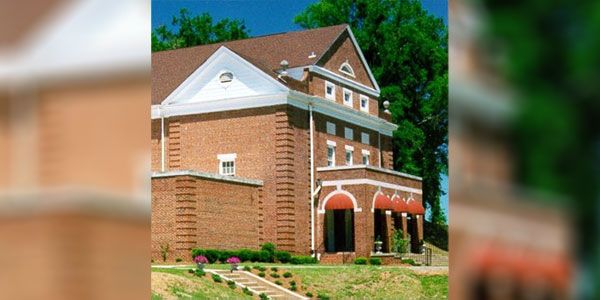
Langdale Theater
Situated on an elevated site, this majestic building overlooks the historic Langdale Mill, which was built in 1866 and was the beginning of the textile village known as Langdale.
The theater was built in 1937, after the old wood frame theater and school burned. Originally designed by Kennon Perry, an architect of Atlanta, it is a stylized neo-Georgian two-story brick building, it has a formally balanced façade connected by a cloister to LaFayette Lanier School. Three porch arches give the theater a Gothic Temple appearance. The building has been used for school functions, stage plays, church groups, concerts, pageants, dance recitals, cantatas, and religious events. For Langdale community natives, it is fondly remembered as the “Picture Show.”
The restoration of the theater began in 1985 and is now complete. Its interior and exterior appearances are maintained as near to the original as possible. It is owned by the Chambers County Board of Education.

Lafayette Lanier School
After the original Langdale School Building burned, this building was started on the same site in 1934 and completed in 1936. It is designed in stylized Georgian by architect Kennon Perry. It is a two-story, structural tile building on a terraced elevation. From the outside, the structural tile looks like standard brick. The façade is formal with fanlights, nine over nine wooden Austal windows and a gabled roof.
Twelve grades were taught here until the construction of Valley High School in 1939. The 10th, 11th, and 12th grades were relocated there. In later years, the 7th, 8th, and 9th grades were removed leaving only the kindergarten and elementary grades. The school was closed in 2022 as part of the restructuring and consolidation of the Chambers County School District.
The school continues to be a triumph of architectural beauty and an inspiration to educators, students, and area citizens. It is owned by the Chambers County Board of Education.

Fairfax First Christian Church
Chattahoochee Historic Commission, and displays the building’s history for public viewing.This building is part of the original Fairfax Mill Village design which included worker housing, a general store, a school, a kindergarten, and a movie theater.
Built in 1916 by West Point Manufacturing Company, it was called the “Union Church.” It was shared by Disciples of Christ, Methodist, Baptist, and Nazarene denominations. When it was purchased by the Disciples of Christ, it was renamed to The Fairfax Christian Church.
Built in the shape of a cross, it has windows of hammered glass shaped in the design of Moses’ tablets. The pews and light fixtures have designs that repeat the shape of the window.
The Fairfax First Christian Church was added to the Alabama List of Historic Places by the Alabama Historic Commission as part of the Fairfax Mill Village. A historic marker was installed, using a partial grant from the Chattahoochee Historic Commission, adn displays the building’s history for public viewing.

Shawmut Kindergarten
Built in 1908, this type of building is the only one remaining in Alabama. It was deigned and constructed on a scale suitable for use by pre-school children.
Unoccupied since the students were transferred to the Shawmut Bob Harding School in 1984, the building is now owned by the City of Valley. The Valley Recreation Department currently rents out the building for small rentals such as baby showers and birthday parties.
Relocating, restoring, and re-using the structure was a primary goal of the Valley Historic Preservation Commission in 1998.

Shawmut Post Office
Now completely restored, the Shawmut Post Office building previously served the community for about 50 years. Its service ceased when three of the village post offices were centralized and relocated to the Valley City Hall Municipal Complex.
The building was restored originally to be used as an office for a proposed City School System. Since that time, it has been the office for the Valley Parks and Recreation Department, the location of the city’s Record Management program, and offices of the Criminal Investigation Division (CID) of the Valley Police Department. It is currently owned by First Baptist Church of Shawmut.
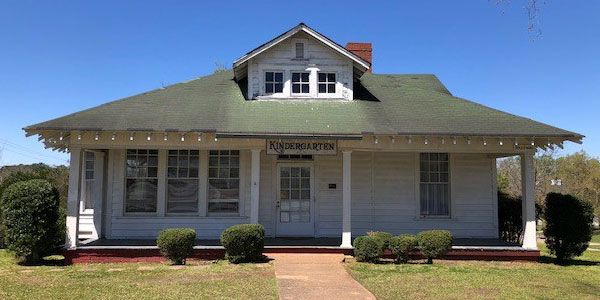
Fairfax Kindergarten
One of the five buildings built by West Point Manufacturing Company, the kindergarten faces Boulevard in the Fairfax community, it was built to be used as a pre-school program for the children of the employees of Fairfax Mill.
The building is now privately owned, has been restored and is operated as a community social center.

Fairfax Post Office
Standing among the “Boulevard” buildings this structure has been used not only as a United States Post Office, but it was the first Valley City Hall and then became the first Valley Senior Center.

Riverview First Christian Church
Known earlier as the “Union Church”, it was organized in 1897 and built by West Point Manufacturing Company. It was used by the Methodist, Christian, and Baptist congregations on alternate Sunday’s.
A restoration was begun in 1938, and it now has a cathedral-like ceiling, basement rooms, new Sunday School classrooms, and round-top cathedral type-stained glass windows. There are two front doors entering the front vestibule.
In 1997, the congregation celebrated its 100th anniversary and installed and dedicated a historical marker denoting its outstanding history and service.
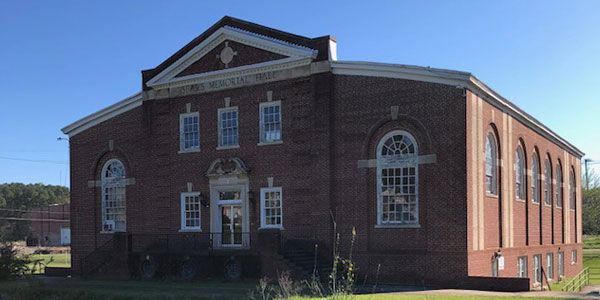
Sears Memorial Hall
This Georgian style red-brick building, known as the Langdale Gym, was constructed beside Moore’s Creek around 1929. It has entries at ground level for both its two stories. Its nine-over-nine ornate windows are complete with keystones.
Langdale Gym is the common name, but its proper name, “Sears Memorial Hall”, was given to the structure in memory of Mr. Horace Sears of Boston, Massachusetts. He was the treasurer of West Point Manufacturing Company for 35 years. Mr. Sears bequeathed $25,000 to the Langdale citizens which was used for the construction of this versatile building.
Langdale Gym has been the home for the community’s recreation program, and at one time was a roller-skating rink and a 10-pin bowling lane on its lower floor. Over the years, many uses have been found for the gym. Retired group meetings, sports tournaments, school physical education activities, programs, club meetings, parties, and receptions have all sed the facilities of Sears Hall at one time or another. Probably most memorable by the community’s children was West Point Pepperell Mill’s “Christmas Tree” at which toys and fruit/nut bags were given away as gifts.
The building is now owned by the Chambers County Board of Education and is part of the LaFayette Lanier School Complex. The building is connected to the school by an underground walkway that goes under US Highway 29.
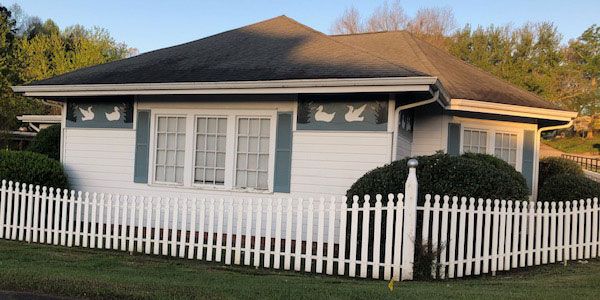
CottonDuck
For many years, the Langdale Kindergarten was housed in this one-story framed bungalow. It was designed and constructed to be used as a public kindergarten and library in 1914. It became operational in 1915 and continued for 67 years at which time the kindergarten was moved to LaFayette Lanier School.
The Langdale Kindergarten building has the distinction of being an offshoot of the first public kindergarten system established in Alabama. It has also been used as a Red Cross station during World War II and as a workshop for Santa and his elves during the Christmas Season. The original kindergarten system was located on nearby Cemetery Hill and remained there until the Langdale Kindergarten Building was completed in 1915.
When the kindergarten began operation, the teachers were paid by the Langdale Mill. Two teachers worked with the three-, four-, and five-year-old children in the early years. As the number of children increased, only five-year-olds attended.
In 1984 when Alabama legally included kindergarten programs as part of public education, the kindergarten was moved into the LaFayette Lanier Elementary School building. Since then, the kindergarten building underwent a historic renovation and became a community civic center and business meeting place. The original façade of ducks, ponds, and plants remained by public sentiment. This décor and the fact that the first fabric made in Langdale Mill was made of cotton and was called “duck” gave the building the name of Cotton Duck.
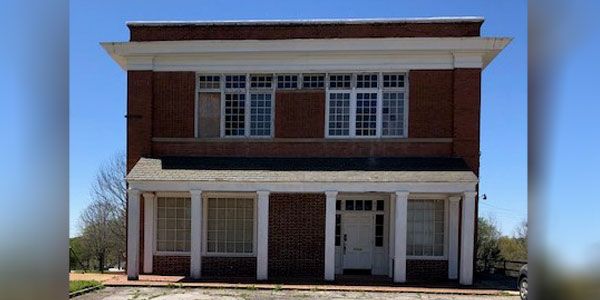
Johnson-Howell Building
This three-story red-brick building is the only remaining “general store” of the four that were built by West Point Manufacturing Company.
It not only served as a general merchandise store, but its third floor housed the Masonic Lodge. An inside stairway connected the first floor to the ground level area.
The lower first floor originally housed a doctor’s office, a drug store, a café, a barber shop, and a butcher shop. It is now privately owned and is being restored. It will be used for several businesses and offices.

Bethlehem Baptist Church and Cemetery
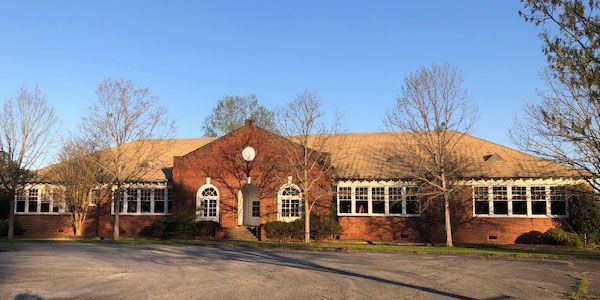
Riverview Elementary School
This stylized Georgian red-brick building was built in 1928, originally serving grades one through nine. In the late 1920’s it added the high school curriculum.
The school had an outstanding athletic program. There was no gymnasium but there was a baseball diamond and a clay basketball court.
The building is recognized architecturally for its formal pediment façade, its decorative raised brick scroll designs, a central arched opening to recessed double-hung doors, and Gothic windows with fanlights and keystones. Perfect architectural symmetry is achieved using two sets of five over-nine windows.
In its years of operation, the Riverview School was a training ground for some of the outstanding educators of Chambers County, i.e., Professor E.I. Oliver, Professor Sellers, Mr. Bob Harding, and Mr. P.S. Owens.
The school is now used for Historical and Record storage. The Cafeteria is rented out by the Valley Recreation Department for events.

Fairfax Ball Park
Fairfax Ball Park, more commonly now known as Crestview Ball Park, has served the area baseball teams since the 1920’s. This well-preserved recreational area is now the home field for the Valley High School “Rams” baseball team. After an extensive renovation of the ball field and the addition of modern field lighting, the ballpark was donated to the Chambers County Board of Education by the City of Valley. It is the only remaining grandstand which came from an extensive early baseball history that saw local teams produce major league baseball players during the Babe Ruth era of American Baseball history.
The stately wooden clapboard grandstand was repaired in 1991 which included painting it in the original white color.
Langdale Boy Scout Hut
Constructed from native rock, the Boy Scout Hunt was built by West Point Manufacturing Company for use for use of the local scouts. Mr. Charlie Holloway, a locally renowned Black stone mason, and his crew constructed the building. The rock came from the immediate area, much of it coming from the Chattahoochee Riverbed when the Langdale Dam was expanded. The rock was hauled by mule and wagon up Randolph Hill to the scenic site. The wheels from these wagons were later made into light fixtures and are still in use in the Boy Scout Hut.
A beautiful rock fireplace was built on the southern end of the hut, and the Boy Scout emblem is embedded, using white stones, over the fireplace. Native pine was used on the exterior and for the inside paneling and flooring. The original shutters remain in place on the exterior walls. Oak trees and dogwoods remain as originally planted on the site. From the building’s location, one can easily see the Chattahoochee River and the Langdale Mill Dam.
The Boy Scout Hut is owned by Mr. Clay Calhoun and is being restored.